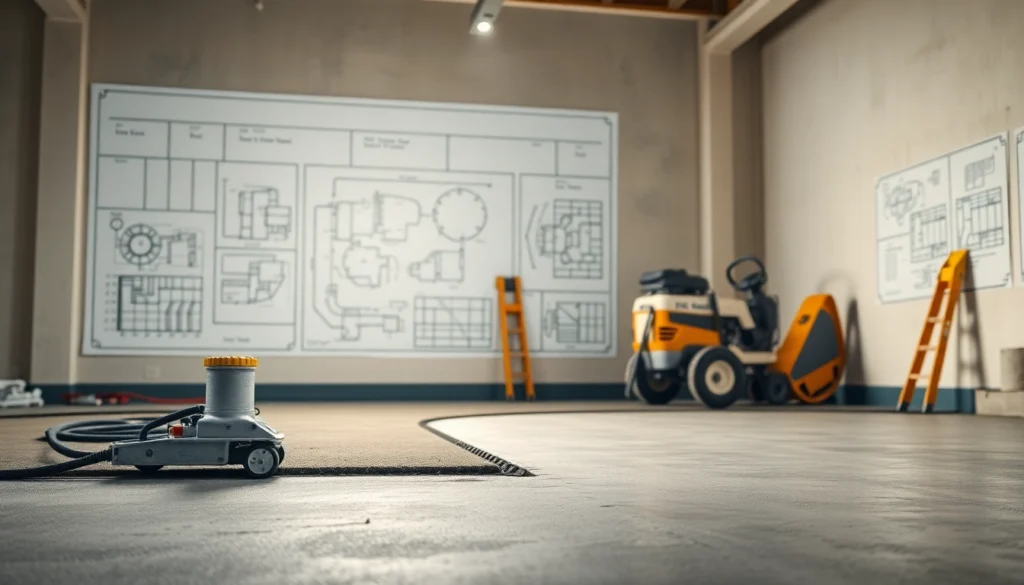Understanding the Importance of Chimney Repairs
Maintaining the integrity of your home’s chimney is crucial for both safety and efficiency. An often overlooked aspect of home maintenance, chimney repairs play a vital role in preventing structural damage, ensuring proper ventilation, and safeguarding your property against potential hazards such as fires, carbon monoxide leaks, and water ingress. In the United Kingdom, where traditional masonry and brickwork dominate many residential and commercial buildings, keeping your chimney in top condition is more than just a matter of aesthetics—it’s a fundamental component of home safety and longevity. Whether you’re a homeowner, landlord, or property manager, understanding the significance of timely chimney repairs can save you substantial costs and prevent dangerous situations in the future.
To explore the nuances and best practices surrounding this essential service, visit chimney repairs and discover trusted local specialists who can assist with your needs.
Common issues that require chimney repairs
Chimney deterioration manifests in various forms, often depending on construction materials, exposure to the elements, and maintenance history. Some of the most common issues include:
- Cracks and Masonry Damage: Structural cracks in the brickwork or mortar joints compromise the chimney’s stability. These are often caused by weathering, freeze-thaw cycles, or impact damage.
- Loosened or Missing Flues and Caps: The flue liner protects against hot gases and prevents chimney fires. Damage or deterioration of this liner can lead to dangerous leaks. Caps prevent water, debris, and animals from entering.
- Water Penetration and Leaks: Water ingress weakens mortar and brickwork, leading to erosion and spalling. Rusted metal components are also common culprits.
- Damaged or Deteriorating Flashing: Flashing around the chimney base prevents water from seeping where the chimney meets the roof, but over time it can rust or lift, causing leaks.
- Creosote Buildup and Blockages: Accumulation of creosote and debris inside the chimney reduces flue efficiency and increases fire risk.
- Storm and Wind Damage: Severe weather can dislodge bricks, damage caps, or cause partial collapses.
Regular inspections can detect these issues early, allowing for cost-effective repairs before major damage occurs. Addressing problems promptly ensures your chimney operates efficiently and safely.
Signs your chimney needs professional attention
Homeowners should be vigilant for warning signs indicating the need for chimney repair services. Recognizing these early signs can prevent costly damages and potential safety hazards:
- Cracks or Deterioration: Visible cracks in bricks or mortar joints are a sign of structural weakness.
- Leaking Water Stains: Water stains on ceiling or walls near the chimney indicate leaks.
- Excessive Soot or Creosote: Visible buildup or foul odors suggest creosote accumulation, which increases fire risk.
- Damaged or Missing Cap/Flashing: Exposed flue or visible gaps can allow water ingress or entry of animals.
- Unusual Smells or Smoke: Fireplaces emitting smoke into the room or foul odors can indicate flue blockages or leaks.
- Chimney Exterior Damage: Crumbling mortar, loose bricks, or corrosion on the exterior require immediate attention.
- Heating System Inefficiency: Increased smoke or reduced draft may be due to obstructions or damage within the chimney.
When in doubt, scheduling a professional inspection minimizes risks and ensures compliance with safety standards.
The risks of delayed repairs on your home’s safety
Ignoring visible signs or delaying necessary repairs can have serious consequences. The dangers include:
- Fire Hazards: Cracked or compromised flues and creosote buildup heighten the risk of chimney fires, which can rapidly spread to the entire residence.
- Carbon Monoxide Poisoning: Damaged or blocked chimneys can cause lethal gases to back up into living spaces, risking poisoning.
- Structural Collapse: A weakened chimney may collapse, damaging property or causing injury.
- Water Damage and Mold: Persistent leaks can erode building materials and promote mold growth, affecting indoor air quality.
- Decreased Home Value: Visible damage and unresolved issues diminish property appeal and market value.
- Legal and Insurance Risks: Failing to maintain the chimney may violate building codes, complicating insurance claims following damages.
Proactive repairs mitigate these risks, protecting both your home and your loved ones.
Top Techniques and Best Practices in Chimney Repairs
Repointing, relining, and rebuilding methods
Effective chimney repairs employ various proven techniques, each suited to specific issues:
Repointing
Repointing involves removing deteriorated mortar from joints and replacing it with fresh mortar. This process restores structural integrity and prevents water ingress. It is particularly effective on older, brick-built chimneys where mortar degradation is evident.
Relining
Relining entails installing a new liner within the existing chimney flue. Modern materials such as stainless steel or high-temperature ceramic enhance safety, improve airflow, and reduce the risk of fire. Relining is essential for repair or upgrading damaged or unsafe flues, especially in chimney systems with deteriorated or cracked liners.
Rebuilding
When damage is extensive, partial or complete rebuilding may be necessary. This involves removing damaged sections and reconstructing with durable, weather-resistant materials. Proper rebuilding restores both safety and functionality, often combining traditional masonry with modern composites.
Choosing the right technique depends on assessment outcomes, material conditions, and budget considerations.
Choosing quality materials for long-lasting repairs
Material selection is key to ensuring durability and safety in chimney repairs. High-quality options include:
- Refractory Bricks and Mortars: Specifically designed to withstand high temperatures and thermal cycling.
- Stainless Steel Liners: Corrosion-resistant, long-lasting, and flexible for diverse chimney sizes and shapes.
- Waterproofing and Sealants: Ensuring chimneys remain impervious to water intrusion over time.
- Mortar Mixes: Type-N, Type-S, or specialized fire-resistant mortars, selected based on application and exposure.
Using reputable suppliers and superior materials reduces future maintenance costs and extends the lifespan of your chimney.
How to ensure compliance with safety standards
Adhering to UK building regulations and safety standards is fundamental. Reputable chimney repair specialists follow guidelines such as:
- British Standards (e.g., BS EN 1856 for flue linings)
- Gas Safety (Installation and Use Regulations)
- Building Regulations Part J (fire safety and combustion appliances)
Ensuring proper documentation, obtaining necessary permits, and passing inspections are critical. When selecting a contractor, verify their certifications and membership with professional bodies like the National Federation of Roofing Contractors (NFRC).
Step-by-Step Guide to Planning Your Chimney Repair Project
Assessing damage and obtaining professional inspections
The first step involves a thorough visual inspection and, ideally, a professional chimney assessment. Certified specialists will evaluate structural integrity, identify damaged components, and recommend appropriate repairs. Modern tools such as thermal imaging and CCTV cameras help detect hidden issues, like internal blockages or deteriorated liners, which are not visible externally.
Regular inspections are recommended every 1-2 years, especially if you frequently use your fireplace or stove. Prompt detection ensures repairs are manageable and cost-effective.
Requesting quotes and selecting reputable chimney repair specialists
Gather multiple quotes from trusted local contractors. When evaluating bids, consider experience, reputation, material quality, and warranties offered. Verify credentials, memberships, and customer reviews. Review past projects or ask for references to ensure reliability. Opt for specialists who stay updated with current standards and use modern tools.
For guidance on selecting reputable professionals, turn to trustworthy directories like TrustATrader or Checkatrade, which vet their members thoroughly.
Scheduling and preparing for the repair process
Once you’ve chosen your contractor, coordinate a schedule that minimizes disruption. Clear the area around the chimney and ensure safe access points. Discuss project timelines, materials to be used, and safety protocols. Proper preparation can streamline the repair process and prevent delays.
Ensure you understand the scope of work, warranty coverage, and post-repair maintenance requirements.
Cost Considerations and Budgeting for Chimney Repairs
Understanding typical repair costs in the UK
The cost of chimney repairs varies based on scope, materials, and regional factors. For minor repairs such as repointing or patching, prices can start from £300 to £1,500. More extensive work, such as relining or rebuilding, can range from £2,000 to over £4,000, depending on the complexity.
For example, chimney relining with stainless steel liners generally costs between £1,000 and £2,500, including materials and labor. Complete rebuilds or large-scale repairs naturally incur higher costs, especially if structural reinforcement or scaffolding is required.
Factors influencing repair pricing and scope
- Extent of Damage: Structural issues or internal deterioration increase complexity and cost.
- Material Choices: Premium materials like stainless steel or specialized bricks raise expenses.
- Accessibility: Hard-to-reach chimneys or those on multi-story buildings require additional labor and equipment.
- Location: Regional variation in labor rates impacts overall costs.
- Permitting and Inspections: Additional costs may apply for regulatory compliance.
Request detailed quotes that itemize each component to understand cost drivers clearly.
Tips for affordable yet effective chimney maintenance
- Schedule proactive inspections to detect issues early.
- Prioritize repairs as soon as problems are identified.
- Use skilled, reputable contractors to avoid hidden costs and substandard work.
- Opt for high-quality materials to decrease long-term maintenance requirements.
- Consider combined services, like roof and chimney repairs, to reduce costs.
Maintaining a regular repair and maintenance schedule can significantly extend your chimney’s lifespan and save money in the long run.
Maintaining Your Chimney’s Longevity and Safety
Routine inspections and preventive measures
Annual inspections are recommended to monitor the condition of your chimney. Regular cleaning, especially before the heating season, removes creosote buildup and reduces fire risk. Installing a robust chimney cap prevents debris, water, and animals from entering, which minimizes damage.
Using moisture barriers, sealing exposed masonry, and applying water repellents further protect your chimney, reducing deterioration caused by the damp UK climate.
Seasonal considerations and storm damage prevention
During fall and winter, high winds and storms can dislodge bricks or damage caps. Inspect after severe weather events, and address any issues promptly. In spring, check for water ingress or residual damage.
Consider installing storm-proof caps, consolidating loose bricks, and reinforcing vulnerable areas to safeguard your chimney from seasonal hazards.
When to schedule professional chimney assessments
Routine inspections should be performed at least once annually, especially if you use your fireplace regularly. Certain conditions warrant more frequent checks:
- After severe weather or storms
- If you notice smells, smoke issues, or water leaks
- Following major renovations or roof repairs
- If you detect cracks, crumbling brickwork, or dislodged caps
Professional assessments ensure compliance with safety regulations, extend your chimney’s life, and keep your home safe for years to come.



